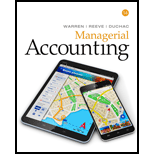
(a)
Income from operations: Income statement reports revenues and expenses from business operations, and the result of those operations, before taxes, other revenues and expenses, is referred to as income from operations.
Profit margin: This ratio gauges the operating profitability by quantifying the amount of income earned from business operations from the sales generated.
Formula of profit margin:
Investment turnover: This ratio gauges the operating efficiency by quantifying the amount of sales generated from the assets invested.
Formula of investment turnover:
Formula of ROI according to Dupont formula:
To compute: Selling, general, and administrative expenses of each segment.
(b)
To compute: Property, plant, and equipment portion of each segment
(c)
To compute: Income from operations for CO and F Segments
(d)
To compute: Profit margin of each of the segments
(e)
Investment turnover of each of the segments
(f)
ROI of each of the segments using DuPont formula
(g)
To discuss: The variables that would impact the franchised Company HR in comparison to the non-franchised independent company.
Want to see the full answer?
Check out a sample textbook solution
Chapter 9 Solutions
Managerial Accounting, Loose-leaf Version
- Can you help me solve this general accounting question using valid accounting techniques?arrow_forwardGeneral accountingarrow_forwardTechNova Inc. is starting a new project expected to generate $1,200,000 in revenues, $400,000 in cash operating expenses, and depreciation expense of $200,000 per year for 8 years. The corporate tax rate is 30%. The project will require an increase in net working capital of $100,000 in year one and a decrease in net working capital of $90,000 in year eight. What is the free cash flow from the project in year one? A) $520,000 B) $530,000 C) $540,000 D) $550,000arrow_forward



